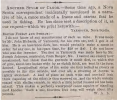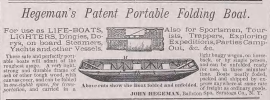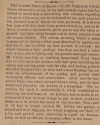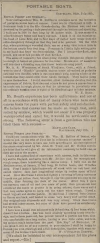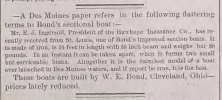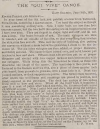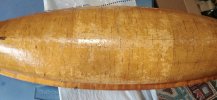I'm curious about Theriualt's assertion that Chestnut's 1905 patent expired after six years, since I would expect a Canadian patent from that era to have been renewable, probably twice, even if the original term was only six years (as opposed to the later 17 years). Also, there would not have been much reason for a 14 year "cease and desist" lawsuit over an expired patent, unless the suit included claims for past royalty damages. Finally, Theriault should have done some searching of court archives himself to make a confident assertion that the litigation was abandoned. But maybe he didn't, and just read about it from some other source. Perhaps I'll get his book.
No, I never had any serious interest in the subject of who invented the modern canvas/rib/plank canoe until last year. Nor am I motivated to pay $175+ for MacGregor's book. Can you summarize what he says about the Chestnut patent dispute?
It seems reasonable that the Chestnuts could have learned about birch bark canoe building from a Maliseet around the turn of the 19th century, but that doesn't bear on the building of modern canvas/rib/plank canoes on clenching iron forms.
This patent dispute is also covered on pages 170-172 of Roger MacGregor’s book titled “When the Chestnut Was in Flower - Inside the Chestnut Canoe” as you may know but his perspective is quite different.
No, I never had any serious interest in the subject of who invented the modern canvas/rib/plank canoe until last year. Nor am I motivated to pay $175+ for MacGregor's book. Can you summarize what he says about the Chestnut patent dispute?
I also inquired about his comment that “The young William and Harry Chestnut learned the trade of canoe building from Peter Joseph (Pete Jo), a Maliseet from St. Mary’s reserve.”
It seems reasonable that the Chestnuts could have learned about birch bark canoe building from a Maliseet around the turn of the 19th century, but that doesn't bear on the building of modern canvas/rib/plank canoes on clenching iron forms.

